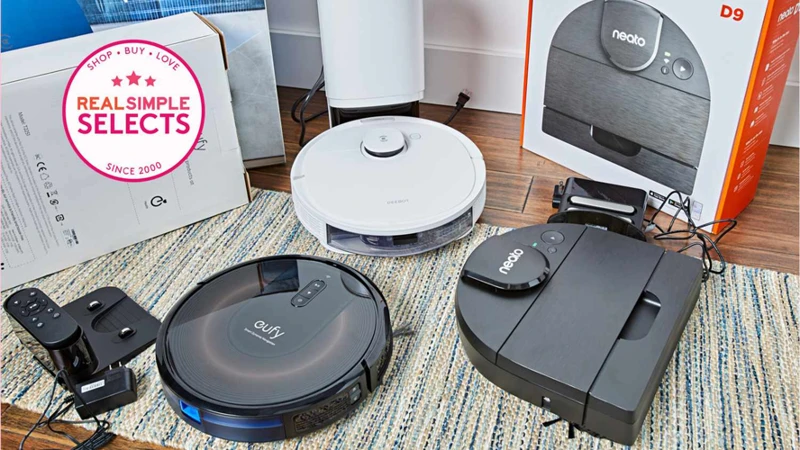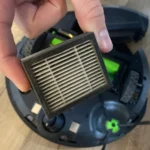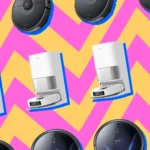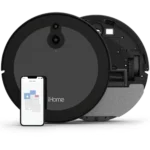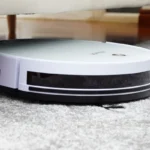Have you ever wondered how to safely store your smart vacuum cleaner battery? As vacuum cleaners become more advanced, so does the technology behind their batteries. This means not only should you follow proper storage procedures to extend the life of your battery but also to ensure safety in your home. In this guide, we’ll explore why proper storage matters for your battery, and provide step-by-step instructions for keeping your smart vacuum cleaner battery in tip-top shape. From avoiding overcharging to safety measures, we’ve got you covered. So, let’s dive in and explore how to store your smart vacuum cleaner battery safely and effectively.
Why Proper Storage Matters
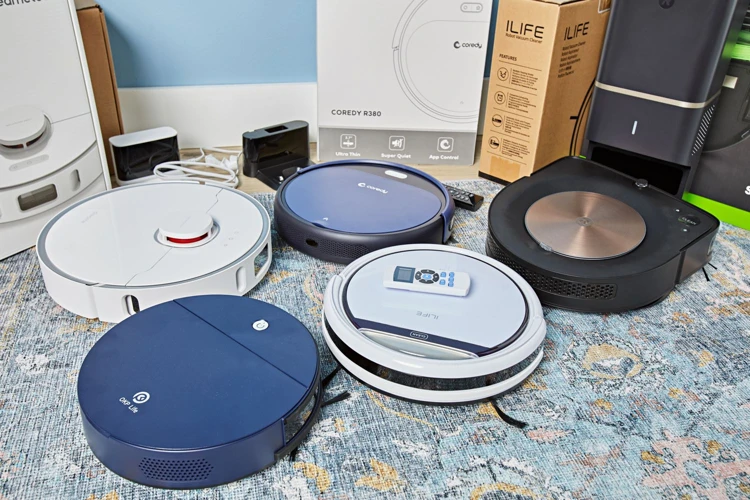
It is of utmost importance to store your smart vacuum cleaner battery properly to ensure its longevity and safe usage. The battery plays a vital role in keeping your smart vacuum cleaner up and running. It is not just about keeping the battery functional but also about making sure that it does not pose any risk to your home and loved ones. Proper storage is essential for maintaining the quality of your vacuum cleaner battery as well as its safety. Neglecting this aspect might lead to damaged batteries or even hazardous accidents. In the following section, we will discuss why proper storage matters and the risks of improper storage. And if you want to learn more about extending the life of your smart vacuum’s battery, we recommend reading our article on How to Extend Your Smart Vacuum Battery Life.
1. Overcharging Prevention
Properly storing your smart vacuum cleaner battery ensures that it serves you for a long time. One crucial aspect of safe storage is preventing overcharging. Overcharging can damage the battery’s capacity and even lead to a fire or explosion. Here are some steps to prevent overcharging:
- Use the Right Charger: Always use the compatible charger supplied with your device. If it is misplaced, opt for a charger from a reputable dealer, and check the voltage and ampere specifications before purchasing. Avoid the latest vacuum charger advancements that might be incompatible with your device.
- Avoid Fast Charging: Using a fast charger might seem like a good idea, but it can lead to overcharging. Fast charging generates more heat, which might cause the battery to overheat and reduce its lifespan.
- Set Charging Limits: Most smart vacuum cleaners have a built-in mechanism to prevent overcharging. However, it is wise to unplug the charger once the battery level reaches 100%. You can also set the charger’s timer to avoid charging beyond the required time.
- Charge When Necessary: Avoid keeping the vacuum cleaner battery plugged in when it is not in use. Charge it only when the battery is low or when you plan to use the device.
- Check Battery Temperature: Overheating can cause significant damage to the battery. Ensure that the battery temperature does not exceed 113°F (45°C). If the battery feels unusually hot, disconnect it from the charger and let it cool down before resuming storage.
By taking these precautions, you can prevent overcharging, extend the life of your vacuum cleaner battery, and ensure that your smart home integration vacuum battery life stays reliable. Remember to dispose of your old batteries safely and consider battery replacement if you notice reduced performance or damage.
2. Damage Prevention
Proper storage of your smart vacuum cleaner battery is essential to prevent damage. Here are some tips to prevent damage to your battery:
- Avoid Extreme Temperatures: Extreme temperatures can damage your vacuum cleaner battery. It’s important to store the battery in a dry and cool place, away from direct sunlight and heat sources.
- Avoid Humidity: Humidity can also damage your battery. It’s recommended to store your battery in a dry place.
- Avoid Impact: Dropping or hitting the battery can damage it. It’s essential to handle your battery carefully to prevent any damages.
- Avoid Water Contact: Water can cause severe damage to your battery. Make sure to keep the battery dry at all times.
- Avoid Overload: Overloading a battery can also damage it. Make sure to monitor the battery’s charging time and avoid overcharging it. Refer to the manufacturer’s instructions for optimal charging times.
- Avoid Dust Buildup: Dust can accumulate on your vacuum cleaner’s battery, which can damage the battery over time. Make sure to clean the battery before storing it. Use a dry cloth to wipe the outer surface of the battery gently.
By following these tips, you can prevent damage to your vacuum cleaner battery and extend its lifespan. Additionally, make sure to refer to the manufacturer’s instructions for more information on how to extend your battery’s lifespan. If you’re in need of a new battery, check out our article on the latest vacuum charger advancements for more information.
3. Safety Measures
When it comes to any electrical device, safety should always be a top priority. This also applies to your smart vacuum cleaner battery, especially when storing it. Follow these safety measures to avoid any potential accidents or damage:
- Keep out of reach of children: As with any battery or electronic device, always make sure to store it somewhere that children cannot access it. This will prevent any potential accidents or harm.
- Avoid exposing to water or other liquids: Water or other liquids can damage your battery or cause it to malfunction. Always keep your battery in a dry and cool place.
- Avoid exposing to high temperatures or direct sunlight: High temperatures or direct sunlight can cause the battery to overheat and potentially catch fire. Always store your battery in a cool and dry place.
- Avoid dropping or puncturing the battery: Dropping or puncturing the battery can cause damage that can be dangerous or even fatal. Always handle your battery with care, and if you suspect any damage, do not use or store the battery.
- Use the recommended charger: Using the incorrect charger or a subpar charger can cause damage to your battery or potentially lead to fire hazards. Always use the charger that came with your smart vacuum cleaner or a recommended replacement from the manufacturer. To read more about the latest vacuum charger advancements, click here.
- Never attempt to disassemble the battery: Disassembling your battery can be extremely dangerous and should only be done by professionals. Attempting to take apart the battery can cause toxic chemicals to leak or cause other harmful situations.
Following these safety measures will not only ensure that your battery is stored correctly but also that it remains safe for you and your family to use. Always prioritize safety first and never take risks when it comes to your smart vacuum cleaner battery.
How to Store Your Battery Safely
When it comes to safely storing your smart vacuum cleaner battery, there are several important factors to consider. Ensuring the proper storage of your battery is crucial in prolonging its lifespan and maintaining its overall performance. However, the process can seem overwhelming and confusing, with many different opinions and recommendations floating around. In this section, we will provide you with a comprehensive guide on how to store your battery safely, highlighting the most important steps and precautions to take. Whether you are a first-time smart vacuum cleaner owner or a seasoned pro, these tips will help you keep your battery in top condition for years to come.
1. Clean the Battery
Before storing your smart vacuum cleaner battery, it’s crucial to clean it thoroughly to prevent any corrosion or buildup. Here are some steps you can take to clean your battery safely:
- Step 1: Turn off your smart vacuum cleaner and unplug the battery.
- Step 2: Use a soft, dry cloth to gently wipe away any dirt, dust, or debris from the battery’s surface.
- Step 3: If there are any stubborn stains or grime on the battery, mix a solution of equal parts water and baking soda. Dip a soft-bristled brush into the solution and gently scrub the battery until the stains are removed.
- Step 4: Once you’ve finished scrubbing, rinse the battery thoroughly with clean water and dry it with a soft, absorbent cloth.
- Step 5: Finally, inspect the battery for any signs of damage or leakage. If you notice any issues, contact the manufacturer or a professional technician for assistance.
By cleaning your battery prior to storage, you’ll be able to prolong its lifespan and prevent any potential damage or issues from occurring. Remember to be gentle when handling your battery and avoid using harsh chemicals or abrasive materials that could cause harm.
2. Store in a Dry and Cool Place
Proper storage is essential in maximizing the lifespan of your smart vacuum cleaner battery. One of the critical factors to consider when storing your battery is the environmental conditions. It is vital to store your battery in a dry and cool place, away from moisture, humidity, and extreme temperatures.
Moisture can cause a short circuit, while high temperatures can damage the chemical composition of the battery cells, causing the battery to degrade faster. On the other hand, low temperatures can slow down the chemical reactions in the battery and, in turn, decrease its overall performance.
To ensure that your battery stays in good condition, store it in a location with a temperature range of 50°F to 80°F (10°C to 27°C). It is also essential to protect your battery from exposure to direct sunlight, as this can cause the temperature to rise and affect the battery’s performance.
Here are some tips to help store your battery safely in a dry and cool place:
| Tip | Description |
| 1. | Use airtight containers. Store your battery in an airtight container to prevent exposure to moisture and humidity. You can use a plastic or metal container with a tight-fitting lid. |
| 2. | Avoid storing in damp areas. Avoid storing the battery in damp areas like basements, bathrooms, or near plumbing fixtures. |
| 3. | Stay away from windows. Keep your battery away from windows or any other areas that receive direct sunlight. Sunlight can cause the battery to overheat and reduce its lifespan. |
| 4. | Choose a stable location. Make sure the location you choose to store your battery is stable and won’t be knocked over, which can damage the battery. |
By following these tips, you can ensure that your smart vacuum cleaner battery stays in good condition and provides reliable performance over time. Remember always to inspect your battery before storing it to ensure it’s free of damages or debris.
3. Avoid Direct Sunlight and Heat
When you store your smart vacuum cleaner battery, it’s essential to avoid exposing it to direct sunlight and heat. High temperatures can affect the battery’s lifespan and reduce its storage capacity significantly. Here are some tips to help you avoid heat and sunlight damage:
| Avoid | Why? | Alternatives |
| 1. Direct sunlight | Exposure to sunlight can cause overheating and permanent damage to the battery cells. | Store in a dry, cool and shaded area or use a covering material, such as a cloth, to shield the battery from direct sunlight. |
| 2. Hot temperatures | Batteries discharge faster in high temperatures, which can reduce their lifespan. | Store your vacuum cleaner battery in a cool area. Consider using a cooler or air-conditioned room to prevent overheating and maintain a stable temperature. |
| 3. Heat-inducing appliances | Appliances like ovens, stoves, and heaters emit heat that can damage the battery and reduce its storage capacity. | Avoid storing your battery near heat sources or appliances that generate heat. Keep it away from direct contact with heating vents or other heat sources. |
By following these guidelines, you can ensure that your smart vacuum cleaner battery remains in good condition for as long as possible. A damaged battery not only affects the performance of your vacuum cleaner but also poses a potential safety hazard. By taking preventive measures against heat and sunlight damage, you can keep your battery in good shape and ensure its safe use.
4. Remove from Vacuum Cleaner
When considering how to safely store your smart vacuum cleaner battery, it is important to take into account the impact of leaving the battery in the vacuum cleaner. Not removing the battery can lead to unnecessary damage and even pose a risk to you and your home.
Here are some key reasons why you should remove the battery from your vacuum cleaner before storing it:
- Prevent discharge: Leaving the battery in your vacuum cleaner for an extended period of time can cause it to discharge completely, which can lead to permanent damage.
- Avoid overheating: If the vacuum cleaner’s motor is switched on accidentally, the battery can overheat and even explode, especially if it is old or damaged.
- Prevent corrosion: The vacuum cleaner’s components can corrode the battery terminals over time, which can reduce the efficiency and lifespan of the battery.
By removing the battery from the vacuum cleaner, you can ensure that it remains in the best possible condition and stays safe during storage. Once the battery has been removed, make sure to follow the other recommended storage steps to ensure it stays in good shape.
5. Keep Battery Charged Partially
When it comes to storing your smart vacuum cleaner battery, keeping it charged partially is an important aspect. This is because lithium-ion batteries, which are commonly used in smart vacuum cleaners, do not like to be stored in a fully charged or fully depleted state. It is recommended to keep the battery charged between 40% to 60%.
Please note: If you’re not planning on using the battery for a long time, we recommend discharging it to around 40% and then removing it from your vacuum cleaner altogether.
To help you understand why keeping the battery charged partially is important, take a look at the table below:
| Charge Level | Battery Lifespan |
|---|---|
| 100% | 300-500 charge cycles |
| 70% | 1000-2000 charge cycles |
| 50% | 1500-2000 charge cycles |
| 30% | 3000-5000 charge cycles |
As you can see, keeping the battery charged partially can significantly increase its lifespan. This is because lithium-ion batteries degrade faster when kept at a high charge level for extended periods of time.
If the battery is stored in a depleted state, it can cause irreversible damage to the battery’s chemical composition, ultimately resulting in a shorter lifespan.
It’s best practice to charge your smart vacuum cleaner battery to around 50% and store it in a safe, cool, and dry place until you’re ready to use it again.
6. Use the Original Packaging
One of the best ways to ensure the safe storage of your smart vacuum cleaner battery is to use the original packaging. This is because the packaging has been designed specifically for the battery and therefore provides optimal protection.
Why is using the original packaging important?
The original packaging is designed to protect the battery from potential damage that can occur during storage. It is made up of materials that are specifically chosen for their protective properties, such as shock-absorbing foam and sturdy cardboard. When the battery is stored in the original packaging, it is protected from knocks and drops, which can cause internal damage and, in extreme cases, even lead to a fire.
What if you don’t have the original packaging?
If you don’t have the original packaging, you should try to find a suitable alternative. Look for a box that is close in size to the original packaging, and line it with soft materials such as foam or bubble wrap to provide extra protection.
How to store the battery in the original packaging:
To store the battery in the original packaging, follow these steps:
| Step 1: | Ensure the battery is clean and dry before storing it. |
| Step 2: | Place the battery in the original packaging, making sure it fits snugly. |
| Step 3: | Close the packaging securely. |
| Step 4: | Label the packaging with the date of storage and the type of battery inside. |
| Step 5: | Store the packaging in a cool, dry place away from direct sunlight and heat sources. |
Conclusion:
Storing your smart vacuum cleaner battery in the original packaging is a simple yet effective way to ensure it remains protected and in good condition. It is especially important to use the original packaging if you plan on storing the battery for an extended period of time. If you don’t have the original packaging, try to find a suitable alternative that provides similar protection.
7. Shelve Storage Options
When it comes to storing your smart vacuum cleaner battery, considering the right shelving options is crucial. Not all shelving options are created equal, and choosing the wrong one could cause your battery to become damaged, deteriorated, or even unsafe. Here are some shelve storage options to consider:
- Metal Shelves: Opt for metal shelves if you want them to last long. They are sturdy and can withstand the weight of the battery. They can also be arranged in different heights, making it easy to store batteries with different sizes.
- Wooden Shelves: Wooden shelves are a good option for storing batteries that weigh less, like those from compact vacuum cleaners. They are also cost-effective and can be crafted into various sizes and shapes.
- Plastic Shelves: Plastic shelves are an excellent option if you’re looking for a lightweight and portable storage solution for your smart vacuum cleaner battery. They also come in various sizes, shapes, and colors, making them an aesthetically pleasing option for storing your battery.
- Glass Shelves: Glass shelves are attractive and can add a touch of elegance to your room. They are also easy to clean, making them a practical storage solution for your battery. However, they are delicate and can break easily, so be careful when placing your battery on them.
When placing your battery on shelves, make sure to avoid stacking them as it could cause your battery to malfunction. Store them side by side or separately to prevent any damage or deterioration. Always check the weight limit of your shelves to avoid overloading them, which could lead to accidents.
Proper storage of your smart vacuum cleaner battery is essential for keeping it functional and safe. By considering the above-shelving options, you can protect your battery and ensure it will last longer.
8. Safety Tips
Keeping your smart vacuum cleaner battery safe is not only essential for the longevity of the battery itself but also for your family’s safety. Here are some essential safety tips that you need to keep in mind while storing your smart vacuum cleaner battery:
- Do not expose to fire: Always remember that your smart vacuum cleaner battery is highly flammable. You must never expose it to fire. Avoid smoking near the battery, store it away from flammable liquids and items, and keep it away from hot surfaces.
- Do not pierce or damage: Puncturing or damaging the battery can cause a short circuit, which can lead to a potential fire or explosion. Avoid dropping it or exposing it to high impacts or sharp objects.
- Keep away from children: Keep the battery out of reach of children or pets. Accidentally ingesting or playing with the battery can lead to serious harm or even death.
- Use approved chargers: Always use approved chargers and following the manufacturer’s recommendations. Using unapproved chargers can harm the battery, reducing its lifespan or even causing a fire.
- Store in a safe, dry and ventilated place: The storage area must be well-ventilated to prevent the buildup of potentially harmful chemicals, and it should be away from direct sunlight, heat or moisture.
- Regularly check for damage: Always inspect the battery for any damages, and avoid using it if it appears to be bulging or leaking. These are significant signs of a damaged battery that requires immediate replacement.
- Dispose of properly: Once the battery has reached the end of its lifespan or is malfunctioning, ensure you dispose of it in the proper way, following your local guidelines.
By following these safety tips, you can rest easy knowing that you’re doing everything possible to ensure that your smart vacuum cleaner battery is stored safely and securely.
9. Battery Replacement
When it comes to smart vacuum cleaners, the battery is a crucial part of the device. It provides the necessary power for the vacuum cleaner to function effectively. However, with time, the battery will deteriorate, and you may notice a decline in the vacuum’s performance. In such circumstances, you may need to replace your vacuum cleaner battery. Here are some important things to keep in mind when it comes to battery replacement:
- 1. Identify the Correct Battery
- 2. Purchase a High-Quality Battery
- 3. Follow the Replacement Instructions Carefully
- 4. Pay Attention to Proper Disposal
Before purchasing a new battery, it’s essential to identify the correct battery for your vacuum cleaner. Check the make and model information of your vacuum cleaner to ensure you buy the appropriate battery. Using the wrong battery may damage the vacuum cleaner or, at the very least, prevent it from working correctly.
Investing in a high-quality battery is crucial to ensure it lasts longer and provides better performance. Look for reputable brands and take a closer look at reviews and ratings before making a purchase.
Replacing the vacuum cleaner battery may seem easy; however, there may be critical instructions that you need to follow. Some vacuums may have a specific replacement process, which must be followed for the device to work correctly. So, make sure you read the manual carefully or seek help from a professional if you are unsure.
Once you have removed the old battery, the question of getting rid of the old battery arises. It would be best if you followed proper disposal procedures for batteries to avoid environmental hazards. Consider contacting your local waste management agency to know your options.
The battery of a smart vacuum cleaner is an essential part of the device, so it’s crucial to keep it in good shape. Knowing when it’s time to replace the battery and following the necessary steps outlined above will ensure your vacuum cleaner continues to function at its best.
Conclusion
After reading this detailed guide on how to safely store your smart vacuum cleaner battery, you should be equipped with the knowledge necessary to protect your battery’s lifespan and prevent any potential safety hazards. Remember, proper storage of your battery can not only extend its lifespan, but it can also prevent any accidents from occurring.
Do not forget to: clean the battery, ensure it is stored in a dry and cool place, avoid direct sunlight and heat, keep the battery charged partially, use the original packaging and shelve storage options, and always follow safety tips.
Proper storage of your smart vacuum cleaner battery can save you time, money, and most importantly, keep you and your loved ones safe. By implementing these steps, you can ensure that your battery will last without any damages that could be caused by improper storage. In case of any doubt, always refer to the manufacturer’s recommendations to handle and store the battery properly.
So, commit to storing your smart vacuum cleaner battery safely today and enjoy the benefits of a long-lasting and safe battery!
Frequently Asked Questions
1. How often should I store my smart vacuum cleaner battery?
You should store your smart vacuum cleaner battery whenever you plan on not using it for an extended period of time.
2. Can I store the battery in the vacuum cleaner?
No, it is not recommended to store the battery in the vacuum cleaner as it can lead to damage and overcharging.
3. What kind of cleaning should I do before storing the battery?
You should clean the battery with a soft cloth to remove any dirt or debris. Do not use any liquid cleaners or immerse the battery in water.
4. Can I leave the battery fully charged during storage?
No, you should keep the battery charged at a partial level to prevent overcharging and damage to the battery.
5. What is the ideal storage temperature for the battery?
The ideal storage temperature for the battery is between 32°F and 77°F (0°C and 25°C).
6. Can I store the battery in a humid environment?
No, you should avoid storing the battery in a humid environment as it can lead to corrosion and damage to the battery.
7. Can I use a third-party packaging for battery storage?
No, it is recommended to use the original packaging for battery storage as it is designed to protect the battery from damage and overcharging.
8. How often should I check on the battery during storage?
You should check on the battery every few months to ensure it is still holding its charge and is not showing signs of damage.
9. Can I replace the battery on my own?
It is recommended to have a professional replace the battery to ensure proper installation and prevent damage to the vacuum cleaner.
10. What should I do if the battery is damaged during storage?
If the battery is damaged during storage, you should dispose of it properly and replace it with a new battery.
